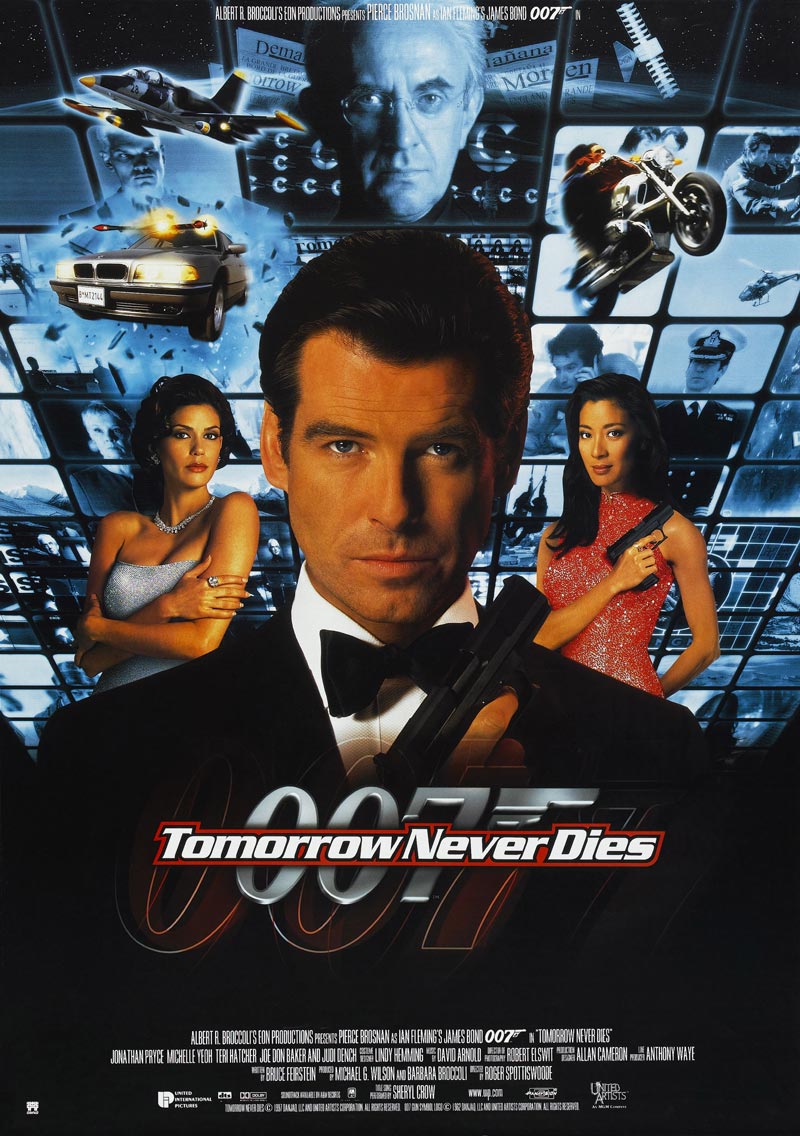The producers of the 18th Bond
movie “Tomorrow Never Dies” used modern technology and weapons to overcome the
enemy from initiating World War III. The
film connected well to our current world where words are now weapons and information
and technology supported by satellites are the new artillery. Our fast paced
technological world keeps changing and Bond’s world also had to reflect this change
of high technological and latest innovations.
Even the pace of the film needed to meet the fast pace of the new world
order driven by technology. This was the
first Bond film to run less than two hours in duration since 1971. This is also the first film where Bond had to
work with another character Wai Lin, a secret agent from China, who was
considered as an equal partner to Bond in order to survive and complete the
mission to save the world this time.
The creation of this film was an enormous
task as this film needed to compete for resources against the production of
James Cameron’s Titanic at the time.
Both Pinewood and Leavesden Studios, the traditional studios used for
previous Bond films, were fully booked.
As a result, a former grocery warehouse in Frogmore England was converted
into a production facility for this film.
Long time production designer Peter Lamont could not work on the film
due to his commitment with the Titanic movie so Allan Cameron was given the job
and he gave the film high-tech but realistic sets. The lack of traditional resources lead to the
use of untraditional sites throughout the film and many remarkable action
scenes were included in the film. One
example of using realistic events was the use of an actual Khyber Pass terrorist
arms bazaar which added realism to the film.
In addition, Brent Cross Shopping Centre car park was used for the car
chase using 17 BMWs for a four minute scene.
Four BMW 750iLs were driven with a stunt driver crouched on the back
floorboard driving via a video monitor the same way Disney filmed Herbie. The hair-raising motorcycle-helicopter chase
used in the Banglok location which also included the English sets to fill in
the post production gaps was effective.
At Frogmore, the BMW R1200 motorcycle leap between two buildings was
performed by expert bike driver Jean-Pierre Goy by leaping between two real
buildings over a prop helicopter. The
unique and untraditional approach in creating this film added more spectacular
settings making the film even more realistic and exciting for the viewers.
Music for this film was written and recorded
in sections to keep pace with the film production. Once again a newcomer, David Arnold replaced
long time Bond composer John Barry.
David immediately added excitement to the music for a new generation of
Bond fans. Actually, David Arnold was a young Bond fan
growing up so he seemed to fit in with the production quite well in producing
original Bond music with more creativity.
The music score sounded fresh but it had references to the great Bond
scores of the past. Sheryl Crow was
chosen as the writer and performer of the opening song while David worked with
a group of Bond alumnus to create the ending credit song “Surrender” performed
by K.D. Lang. The music blended in well
with the film, making this Bond film complete and exciting.
Miniature effects merged with real life
action were a major part in this shorter Bond film making the visual effects
and illusions remarkable. The film’s
special effects supervisor John Richardson took advantage of the Baja Studios
water tank in Mexico after Titanic finished its production to add realism to
both the stealth ship and the HMS Devonshire. The HALO jump was conducted with
80 real parachute jumps using the skills of parachute specialist B.J.
Worth. The director Roger Spottiswoode
used all his skills to obtain the Bond and Wai Lin leap from a Saigon
skyscraper, using only a banner on the building to slow their decent. This short freefall scene used the real
building, a miniature replica, real actors, stunt actors, miniature actors, and
the magic of digital compositing to make the scene as real as possible. Underwater scenes in the film were realistic
as they were completed using the 007 stage water tank. Underwater filming was so complex and real
that sequences had to be filmed with different electrical power setups and at
different times of the day to prevent injury to the film crew. There was a huge amount of publicity made
about the filming effects. The film
opened during Christmas 1997. The
theatres were packed all around the world making this Bond film internationally
a world event.

No comments:
Post a Comment